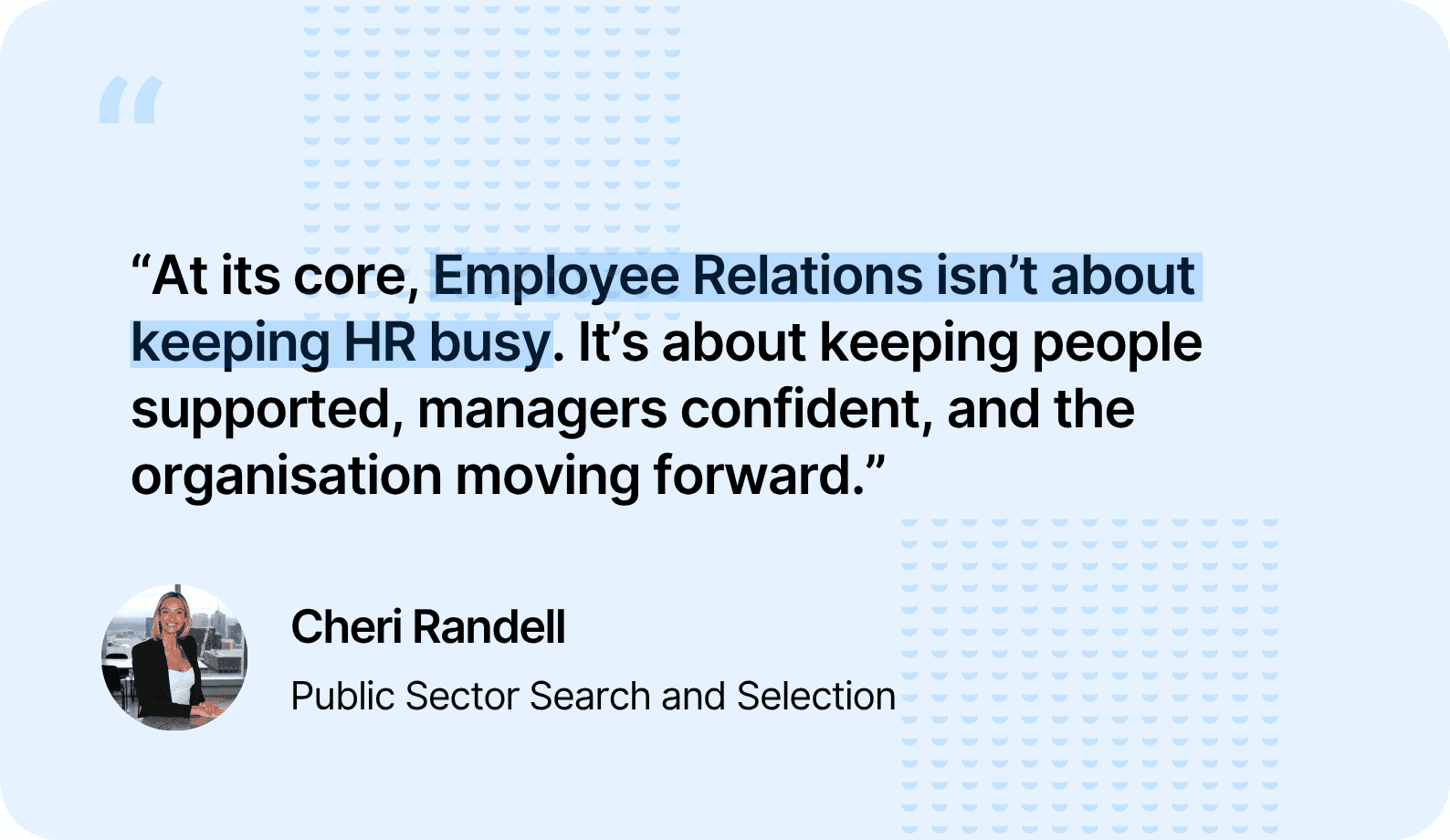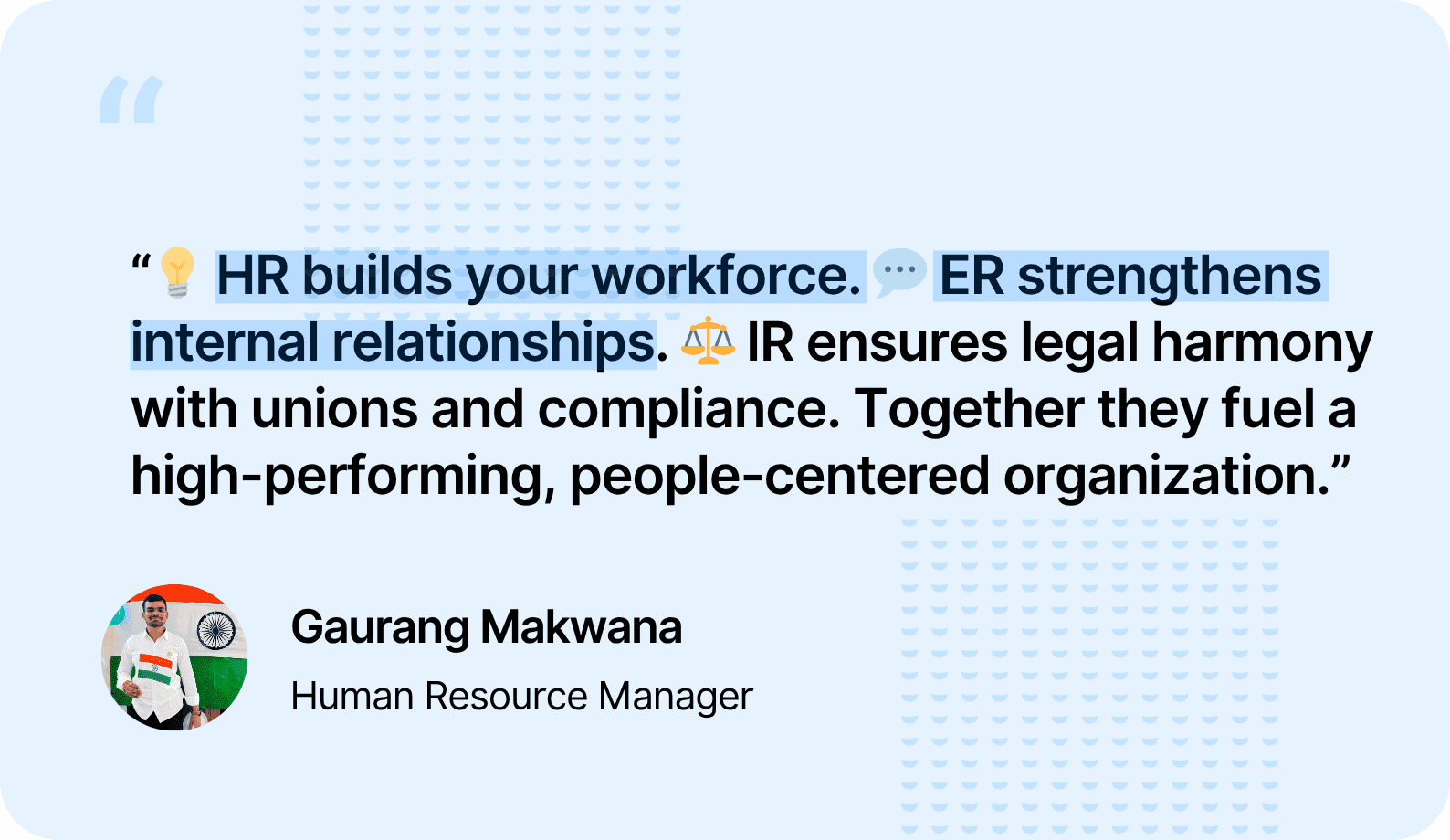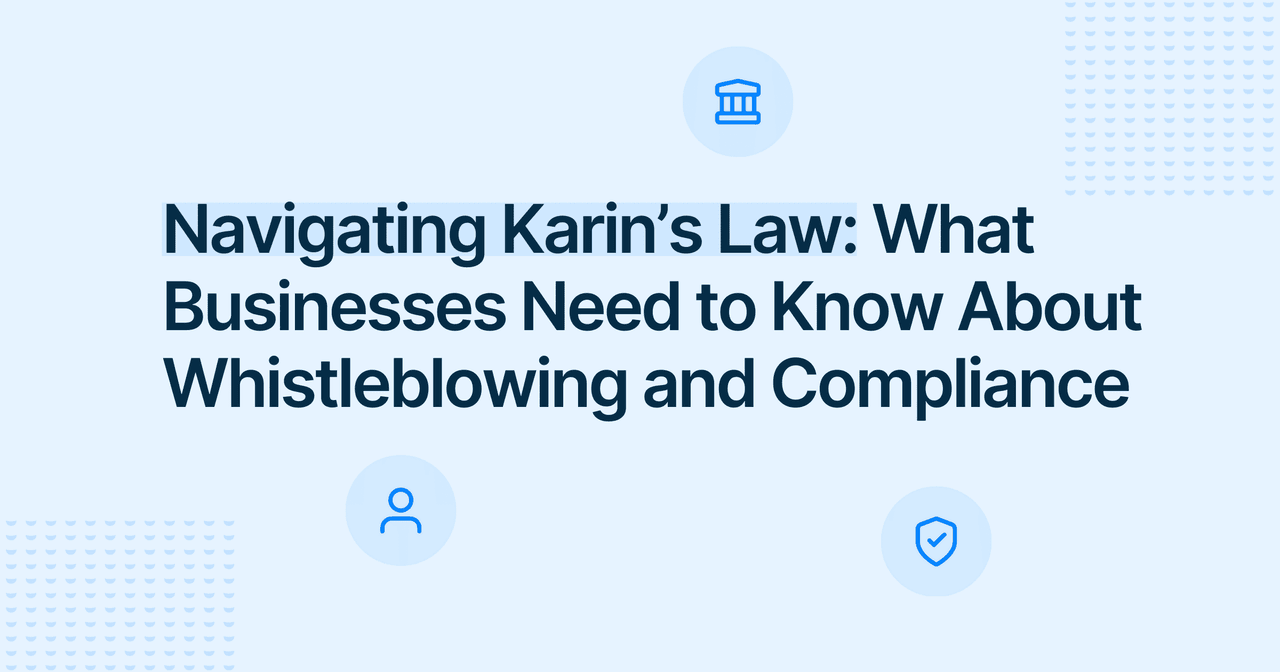




Employee Relations

Alaa El-Shaarawi
Copywriter and Content Manager
Published
2025-11-05
Reading time
8 min


Table of contents
Subscribe to our newsletter
Walk into any office, and you’ll notice a rhythm: people collaborating, problems being solved, teams performing. Now imagine a place where emails go unanswered, managers are unsure how to handle complaints, and tensions simmer under the surface.
What makes the difference is how well an organization understands the distinction between Human Resources (HR) and Employee Relations (ER). Yes, really.
Let’s unpack the roles, overlaps, and boundaries of HR and ER, then explore practical ways to leverage both for a healthier, high-performing workplace. Along the way, we’ll highlight how whistleblowing software keeps processes smooth, cases transparent, and people supported.
Picture Sarah, an HR manager juggling recruitment, performance reviews, and team engagement programs. Across the hall, Ahmed, an employee relations professional, is helping a manager navigate a delicate conflict between two team members.
Both are solving human problems, but in very different ways.
If you’re a manager, HR business partner, ER professional, or organizational leader, this is your story. Perhaps you’ve noticed overlapping responsibilities, unclear escalation paths, or inconsistent handling of employee concerns.
Want your teams to work smarter, not harder, and for employees to feel heard while policies are enforced? This guide breaks down the line between employee relations and human resources, so everyone, from frontline managers to executives, knows exactly who does what and when to step in.
Think of HR as the ones drafting the organizational blueprint, hiring the talent, and designing the processes that keep the organization running. They handle recruitment, onboarding, benefits administration, payroll, training, and performance management.
Essentially, HR professionals make sure the machinery works, and the right people are in the right places.
Consider how Atlassian’s HR team structures its onboarding and performance processes to maintain consistency across global offices. Their HR team ensures the right people are in the right roles and that policies are applied uniformly. But when conflicts or grievances arise, the standard HR toolkit isn’t always enough.
Key HR responsibilities include:
While HR sets the stage, ER makes sure that performance doesn’t falter when the human element comes into play. This is where conflict resolution, employee satisfaction, and employee lifecycle management really matter.
Tools and techniques for managing employee relations cases can help HR professionals handle conflicts, document cases accurately, and maintain a positive work environment.
ER focuses on relationships, culture, and conflict resolution. Where HR lays the foundation, ER stops it from crumbling under interpersonal challenges. ER specialists advise managers, mediate conflicts, handle grievances, and maintain a positive workplace culture in compliance with employment laws. Their role is proactive, preventive, and supportive.
For example, at Salesforce, ER teams work closely with managers to address conflicts proactively and maintain a positive culture. They provide coaching, investigate complaints, and facilitate mediation, so that employees feel heard and managers feel confident in handling situations.
ER responsibilities often include:
The success of any workplace culture depends on how well HR and ER align their goals.

HR and ER often collaborate, but the handoff needs to be seamless. HR handles day-to-day processes, while ER steps in for conflicts, escalations, or nuanced employee cases. When both functions coordinate, organizations can uphold policy consistency, protect employee trust, and support managers effectively.
For example, during a restructuring, HR might manage role changes and logistical communication, while ER makes sure employees understand the process, supports managers in delivering news with empathy, and mediates emerging conflicts. That kind of coordination supports employee morale, reduces absenteeism, and improves turnover rates.
Employee case management through tools like FaceUp helps track cases in one central dashboard, facilitate collaboration, and preserve confidentiality.

Knowing when to involve HR or ER is key. HR is the go-to for day-to-day operations: onboarding, training, benefits, and standard performance discussions. ER takes over when issues escalate: interpersonal conflicts, grievances, compliance concerns, and more complex employee relations issues.
Imagine a manager noticing morale slipping in their team. They consult HR for support on training gaps and performance metrics. When it becomes clear that a conflict exists between team members, ER steps in to mediate, ensuring policies are followed and employees feel heard. All-in-one whistleblowing solutions like FaceUp make this transition seamless.
How organizations structure HR and ER often depends on size, complexity, and culture. There isn’t a one-size-fits-all solution. What works for a 50-person startup is very different from a 5,000-person multinational.
Here are the most common models and their implications:
Example: A 100-person tech startup might have a single HR manager handling payroll and performance reviews, while also mediating disputes. Clear protocols and confidentiality really matter here.
Example: Atlassian has separate HR and ER roles. HR manages policies and performance consistency, while ER handles grievances and complex investigations independently.
Example: A global financial services firm may have regional HR offices managing day-to-day processes, while a central ER team handles escalations. Shared case management software ensures transparency and accountability.
The right structure builds trust. Employees need to feel confident that their concerns, big or small, will be handled consistently, fairly, and confidentially.
Getting HR and ER to work together smoothly isn’t about rigid rules or endless meetings. It’s about simple, practical steps that actually make day-to-day life easier for your team and give employees confidence that their concerns will be handled fairly.
Here’s how to make it happen:
Everyone should know who handles routine HR questions, who steps in for sensitive issues, and when it’s time to escalate. Clear boundaries prevent confusion, avoid duplicated work, and ensure employees feel supported instead of shuffled around.
HR teams benefit from learning basic conflict resolution skills, so they can handle everyday challenges with empathy and fairness. ER teams need deep policy knowledge to navigate complex or sensitive cases. Training both sides builds trust, reduces workplace conflicts, and strengthens effective communication channels.
Platforms like FaceUp make collaboration simple. Cases are tracked, workflows stay on schedule, and everyone stays in the loop. No more lost emails, missed follow-ups, or unclear handoffs. The right employee relations software keeps both HR and ER focused on what matters: supporting people.
A healthy workplace depends on employees feeling safe to raise concerns. HR and ER can reinforce this by modeling transparency, responding quickly, and protecting confidentiality. When people know they’ll be heard without fear, small issues don’t become big problems.
Workplaces evolve, and policies should too. Regular reviews make sure processes stay relevant, equitable, and clear—while also giving HR and ER a chance to identify trends, gaps, or areas that need extra attention. Use employee feedback and metrics like employee satisfaction, turnover rates, and retention to spot areas that need updating.

Think of FaceUp as the bridge between HR and ER. HR can focus on building the workforce and aligning policies, while ER can manage sensitive cases with confidence. Everyone stays in the loop, workflows are clear, and confidentiality is protected.
With FaceUp, your teams don’t just track cases—they collaborate effortlessly:
FaceUp helps organizations improve employee relations management through smarter collaboration, transparency, and trust.
You get a healthy work environment where HR and ER are coordinated instead of siloed. Policies work, people feel supported, and managers can focus on performance instead of paperwork.
Walk back into that office from the intro. Emails are answered, managers feel confident, and teams are performing at their best. That’s what happens when HR sets the framework and ER nurtures the human side of work—and when tools like FaceUp keep everyone aligned.
Clear roles, simple processes, and supportive technology turn what could be chaos into a workplace where people thrive and performance excels.
See how your organization can turn HR and ER collaboration into a competitive advantage. Book a FaceUp demo today and create a workplace where policies work, people are heard, and teams perform at their best.





Keep Reading

Alaa El-Shaarawi2025-12-197 min
Workplace Environment

Marie Roland2025-12-165 min
Whistleblowing

Alaa El-Shaarawi2025-12-087 min
Workplace Environment

Alaa El-Shaarawi2025-12-058 min
Legal & Compliance